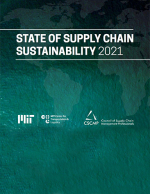Improving Forecast Accuracy through Demand Sensing
This research brief assesses the feasibility and potential value of implementing Demand Sensing in the supply chain of a major consumer medical device company - Johnson & Johnson Vision Care.
J&J Vision Care Demand Sensing
Demand Sensing is an advanced form of forecasting that draws upon three core ideas: Latency Reduction (LR), Downstream Data Integration (DDI), and Measuring the Impact of Demand Shaping Actions (DSA).
In summary, we recommend that J&J Vision Care approach Demand Sensing by attempting all of the three approaches outlined in our research.
Each approach has its own sets of challenges to overcome in order to obtain improvements over the current system.
The LR method outlined in this summary will require a significant change in the way J&J Vision Care executes its S&OP process, potentially becoming more costly. Using the DDI and DSA initiatives will require extracting, processing, and consolidating data that is not yet readily available.
They will also require the creation of a novel Demand Sensing model that is capable of delivering more accurate results. J&J Vision Care should collect the requisite data for DDI and DSA and conduct an analysis to see if our recommendations are cost-effective.
Key Insights
- For product categories with lower sales volume, simpler forecasting techniques can be more accurate
- Demand Sensing is made up of 3 distinct approaches, which can be combined for added improvement to forecasting strategy
- The easiest way to implement Demand Sensing is to reduce the forecast cycle; e.g., from one month to a two-week model
On a final note, it is important to point out that while it is possible to use all three techniques independently, combining them and using them simultaneously would potentially provide the best improvements overall.
What’s Related




Favorites





